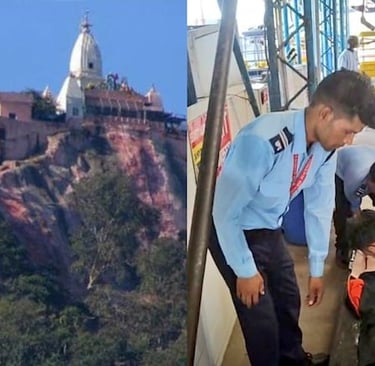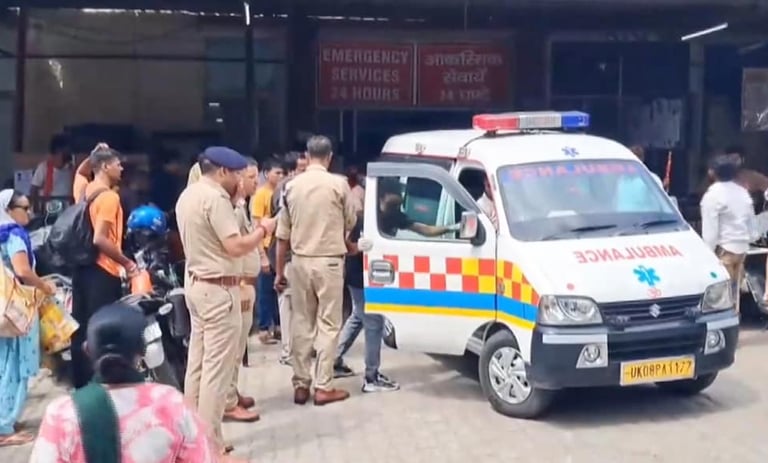Stampede at Haridwar’s Mansa Devi Temple Kills Six, Devotees Injured; Shrine Temporarily Closed
The sacred city of Haridwar was plunged into shock and mourning on Sunday, July 27, 2025, when a sudden stampede on the steps leading to the revered Mansa Devi Temple claimed at least six lives and left more than thirty devotees with injuries, several in critical condition.
NATIONAL
Thinkbrief
7/23/20252 min read


The sacred city of Haridwar was plunged into shock and mourning on Sunday, July 27, 2025, when a sudden stampede on the steps leading to the revered Mansa Devi Temple claimed at least six lives and left more than thirty devotees with injuries, several in critical condition. The incident, which unfolded around 9 a.m., quickly drew intense scrutiny over crowd management and the vulnerability of major pilgrimage sites during the peak of the holy Shravan season.
From the earliest hours, throngs of devotees, energized by the spirit of Shravan, pressed toward the temple perched atop Bilwa Parvat on the Shivalik range. As lines thickened along the steep staircase, a path already dense with faith and expectation, panic rippled through the crowd, reportedly triggered by a rumor that an electric current had spread through a section of a railing near the temple steps. Fears escalated into chaos. In the ensuing rush, men and women stumbled, some falling and getting trampled as the collective will to escape outstripped reason and order.
Eyewitness accounts paint a grim tableau. Surge after surge left people pinned to the ground; cries for help mingled with prayers as police and rapid response teams fought to rescue those trapped in the melee. State Disaster Response Force units and local police arrived quickly, ferrying the injured to hospital beds in a race against time. Medical officials at GD Hospital in Haridwar confirmed thirty-five people were brought in, with several rushed to advanced facilities in Rishikesh for urgent care.
Garhwal Commissioner Vinay Shankar Pandey, upon reaching the scene, acknowledged the failure of crowd control measures. Senior Superintendent of Police Pramendra Singh Dobal attributed the escalation directly to the electric shock rumor, which set off a catastrophic chain of events on the already congested staircase. The state government convened an emergency review, ordering a full magisterial probe into the lapse and began a comprehensive audit of security protocols at religious sites across Uttarakhand.
Chief Minister Pushkar Singh Dhami described the tragedy as heartbreaking, announcing compensation of ₹2 lakh to families of each victim and ₹50,000 for the injured. From the office of Prime Minister Narendra Modi came public condolences and an assurance that local authorities were mobilized to offer assistance. National leaders expressed their collective grief, urging reforms to better manage large gatherings at pilgrimage centers.
The steps to Mansa Devi Temple remain closed to devotees, the once bustling approach eerily silent in the wake of disaster. Authorities have shifted focus to crowd dispersal and forensic investigation, even as the faithful, shocked and grieving, light candles and whisper prayers for the lost.
This stampede is not an isolated episode. India’s long history of deadly religious gatherings and fatal crowd surges looms as context and warning. As Haridwar recoils, urgent questions rise anew: What can be done to secure these spaces of devotion? How can centuries-old pilgrimage traditions be preserved without risking the safety of those drawn to them year after year? Uttarakhand officials, pressed by public outcry and national attention, have promised policy reviews and stricter enforcement, but the true test will come in the months and festivals ahead.
For now, the city grieves. Pilgrims turn back from temple gates, their prayers heavy with longing and fear. Somewhere on the hill, offerings lie untouched, a somber reminder of faith tested by tragedy.

